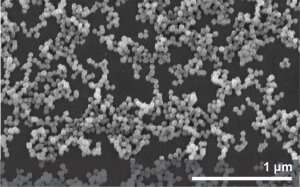Phys.org January 12, 2022
Conductive MOFs possess rich compositions with complex architectures, but remain unexplored as nanocrystals, hindering their incorporation into scalable devices. MOFs form via a series of chemical reactions that join metal ions with linker molecules. Researchers at the University of Oregon made iron triazolate nanoparticles by adding a third ingredient, molecules that mimic the linkers, but that can only bind to something on one end. They act like dead-ends for the growing MOF, ensuring it stays small. They behaved differently at different sizes and temperatures. They could tune the materials to behave a certain way, by adjusting the size of the nanoparticles or the temperature of the environment. The technique could be used to design other MOF nanocrystals with different combinations of metal ions and linker molecules. According to the researchers their work will help adapt how we apply MOFs in existing devices as well as harness their size-dependence in future technologies…read more. TECHNICAL ARTICLE

Credit: University of Oregon